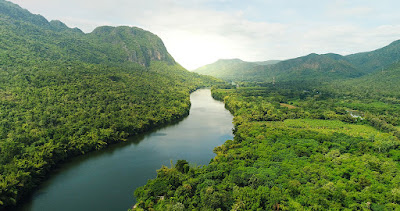Tropical forests are lush, biodiverse ecosystems found in regions near the equator, where temperatures are warm year-round, and rainfall is abundant. They encompass a variety of forest types, including tropical rainforests, tropical dry forests, and montane forests.
Types of Tropical Forests
-
Tropical Rainforests:
- High rainfall (2,000–4,000 mm annually) and consistent warm temperatures.
- Dense vegetation with multiple layers: emergent, canopy, understory, and forest floor.
- Examples: Amazon Rainforest (South America), Congo Rainforest (Africa), and Southeast Asian forests.
-
Tropical Dry Forests:
- Experience distinct wet and dry seasons.
- Less dense vegetation compared to rainforests, with many deciduous trees shedding leaves in the dry season.
- Found in regions like India, Central America, and parts of Africa.
-
Tropical Montane Forests:
- Found at higher altitudes in tropical regions.
- Cooler temperatures and frequent cloud cover, leading to the nickname "cloud forests."
- Example: Andean cloud forests in South America.
Characteristics of Tropical Forests
-
Climate:
- Warm temperatures: 20–30°C (68–86°F) year-round.
- High humidity: Often exceeds 75%.
- Rainfall varies by type: heavy in rainforests, seasonal in dry forests.
-
Biodiversity:
- Home to over 50% of Earth's species of plants, animals, and insects.
- Notable species: Jaguars, sloths, toucans, tree frogs, and a variety of orchids.
-
Soil:
- Often nutrient-poor due to rapid decomposition and leaching caused by heavy rainfall.
- Tropical dry forests may have slightly more fertile soils.
-
Vegetation:
- Rainforests have evergreen trees, climbing plants (lianas), and epiphytes (plants growing on trees).
- Dry forests feature drought-tolerant species like baobab and acacia trees.
Importance of Tropical Forests
-
Climate Regulation:
- Act as major carbon sinks, absorbing CO₂ and mitigating climate change.
- Influence weather patterns globally.
-
Biodiversity Hotspots:Provide habitats for millions of species, many of which are endemic.
-
Oxygen Production:Often referred to as the "lungs of the Earth," contributing to oxygen generation.
-
Resources:
- Source of food, timber, medicine, and raw materials.
- Many life-saving drugs, such as quinine and cancer treatments, are derived from tropical plants.
-
Cultural and Spiritual Significance:Home to indigenous peoples who rely on the forest for their livelihoods and spiritual practices.
Threats to Tropical Forests
-
Deforestation:
- Caused by agriculture, cattle ranching, logging, and infrastructure development.
- Leads to habitat destruction and loss of biodiversity.
-
Climate Change:
- Alters rainfall patterns and increases the risk of wildfires.
- Rising temperatures threaten species adapted to stable tropical climates.
-
Mining and Exploitation:Extraction of minerals and oil causes environmental damage.
-
Illegal Activities:Logging, poaching, and wildlife trafficking disrupt ecosystems.
Conservation Strategies
-
Protected Areas:Establishing national parks and reserves to safeguard biodiversity.
-
Sustainable Land Use:Promoting agroforestry, ecotourism, and sustainable farming practices.
-
Reforestation and Afforestation:Planting native species to restore degraded forests.
-
International Agreements:Efforts like the Paris Agreement and REDD+ (Reducing Emissions from Deforestation and Forest Degradation).











Hiç yorum yok:
Yorum Gönder
Yorumunuz İçin Teşekkürler